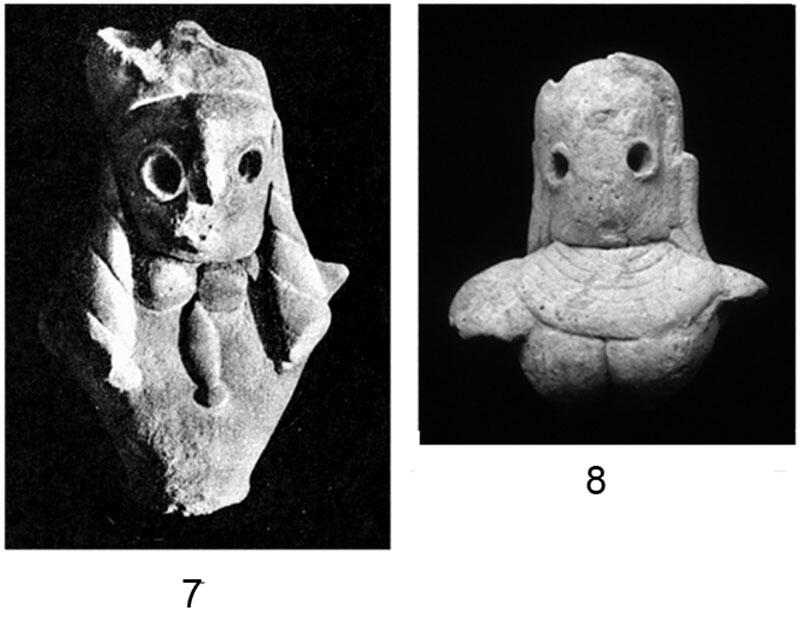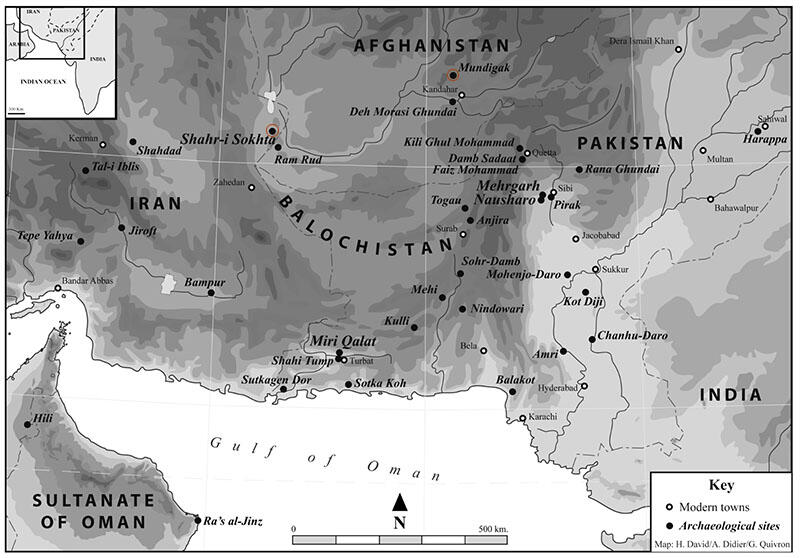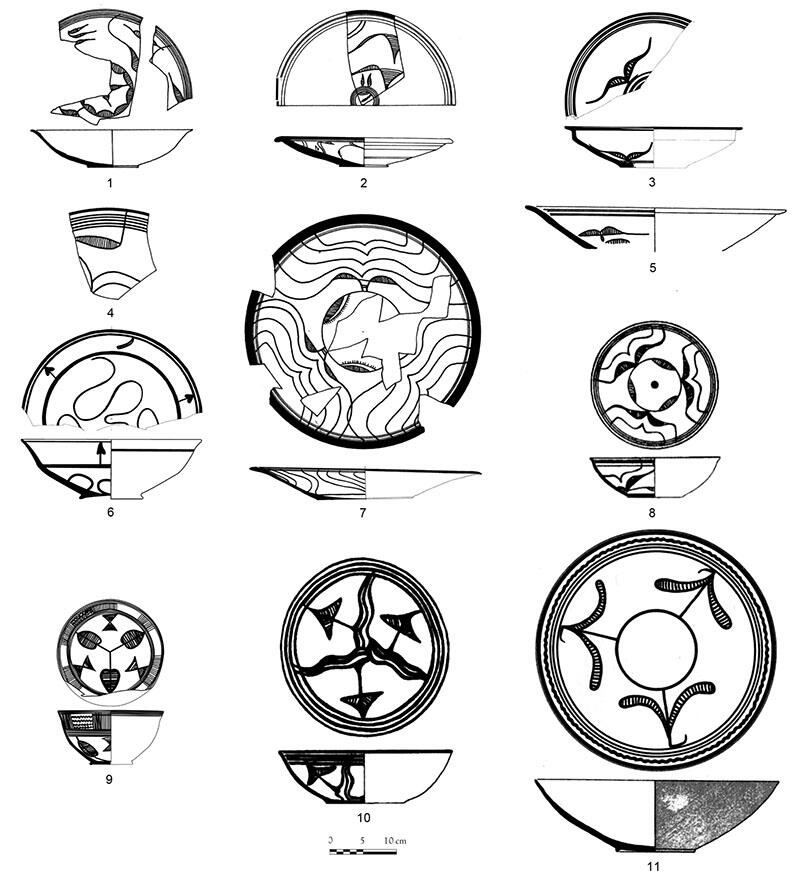A comprehensive overview of the chronology and possible relationships between so-called Helmand and other cultures in the Indo-Iranian region during pre-Indus and ancient Indus times. With a very helpful description of the various pottery styles in the region during this period as well.
"Future research will perhaps enable to discover occupations from the second half of the 3rd millennium BC in the regions of Helmand, near Shahr-i Sokhta or Mundigak. Such evidence could throw light on possible interactions between these regions and the Indus civilization, as well as with the sites of the “Oxus” cultural complex or with south-eastern Iranian sites such as Shahdad. But, in the present state of our knowledge, the current available data do not enable to consider that one of the great highways of interaction between the Indus civilization and Mesopotamia could have been marked by sites such as Mundigak and Shahr-i Sokhta. It is likely that these sites were no longer occupied, while the route of exchanges was lined up in south-eastern Iran with sites such as Shahdad, Tepe Yahya and the Jiroft area." (p. 26)
Images: 1 – Figurines from Mundigak (Casal, Fouilles de Mundigak, 1961: pl. XLI, 8-9)
2 – Map of the Indo-Iranian Borderlands with archaeological sites mentioned in the text.
3 – Bowls and dishes decorated with vegetal motifs. 1, Ceramic from Lal Shah, Period Nausharo IC (PRACCHIA, 1985: fi g. 4a); 2, Ceramic from Rehman Dheri IIIB, scale not available (DURRANI, 1988: Pl. XXXVII); 3, Ceramic from Shahr-i Sokhta IV, Scale not avail-able (BISCIONE, 1990: fi g. 6); 4-5, Ceramics from Nausharo IC (drawing MAI); 6, Ceramic from Miri Qalat IIIc (BESENVAL and DIDIER, 2004: fi g. 8.2); 7, Ceramic from Mundigak IV.3 (CASAL, 1961: fi g. 94.429); 8, 10, Ceramics from Shahr-i Sokhta IV, Grave 1705, n° 32 and 21 (SAJJADI, 2003: fi g. 17); 9, Ceramic from the Dasht Plain (Makran), Period IIIb (drawing MAFM); 11, Ceramic from Mehrgarh VIIA/B (drawing MAI).
- Log in to post comments






